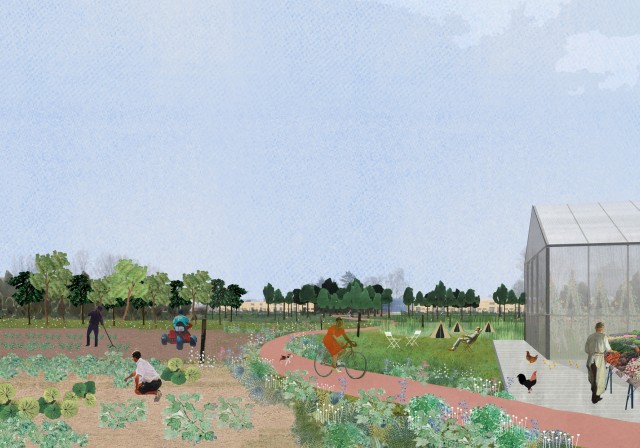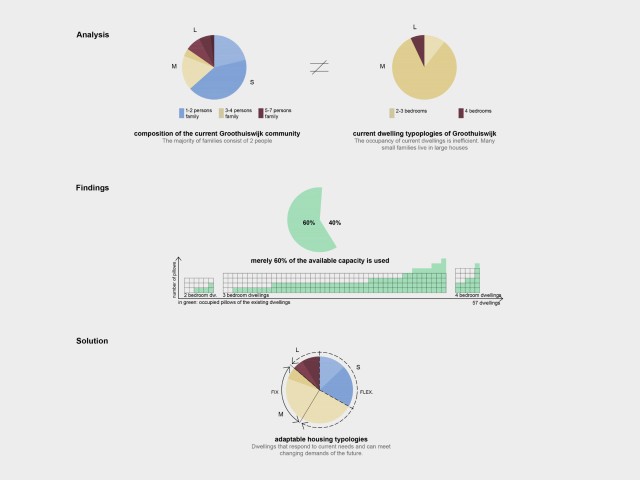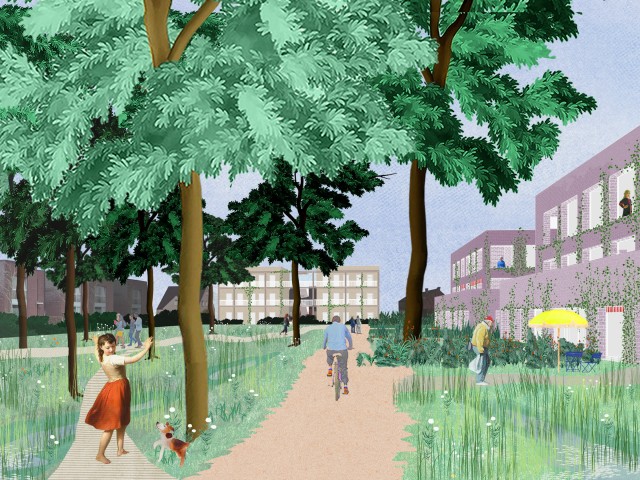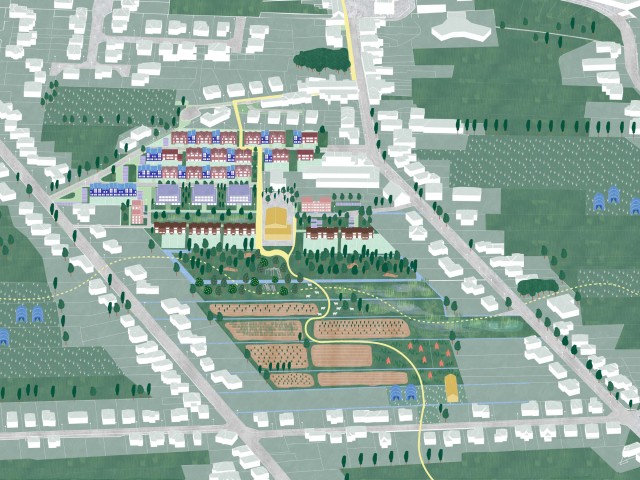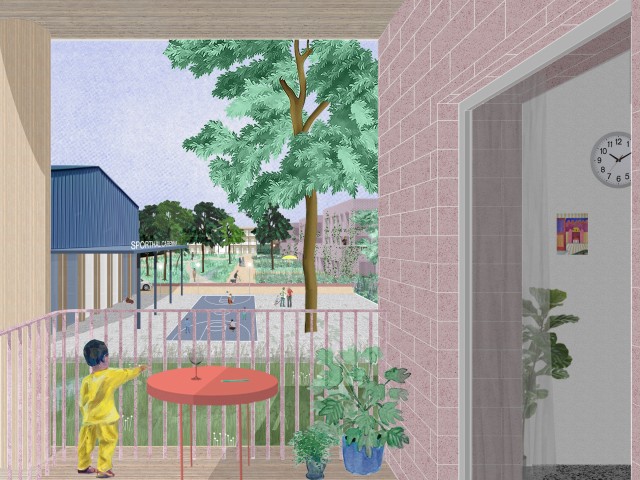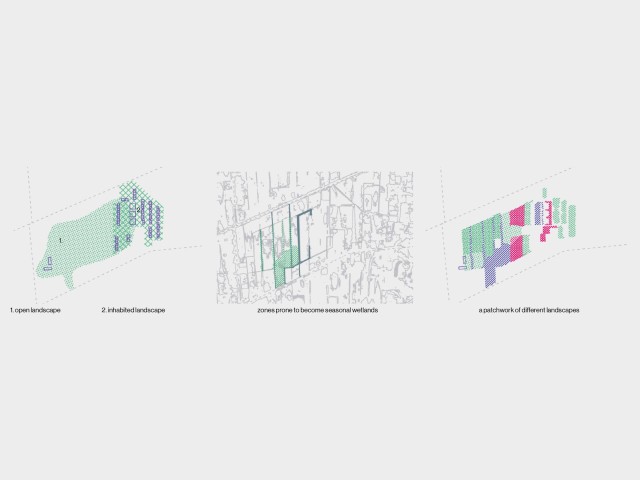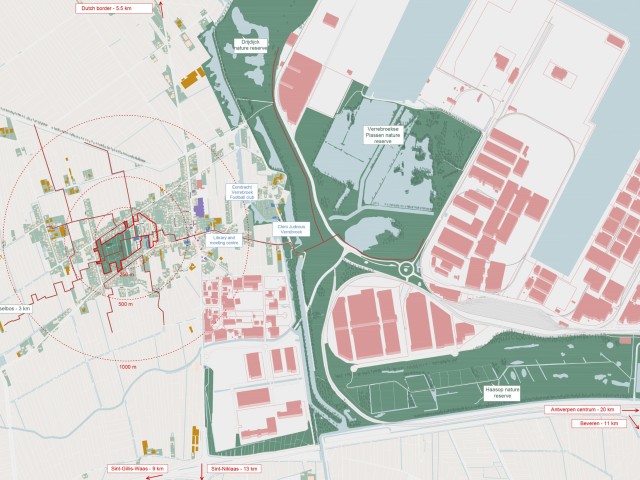Verrebroek
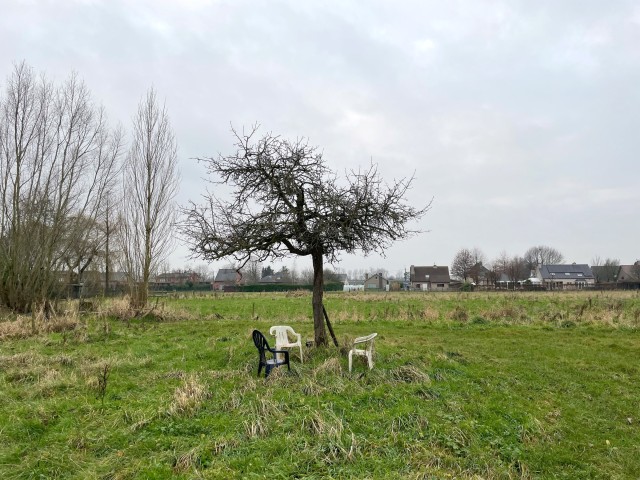
Avoiding the occupation of unbuilt open space has become imperative. The Verrebroek Masterplan focuses on increasing housing density within the existing boundaries of the Groothuiswijk in Verrebroek, preserving valuable green land. This strategy aligns with the ‘Betonstop’ initiative, counteracting the detrimental effects of suburban sprawl and maximising the potential of available resources.
Increasing housing density is central to transforming the Groothuiswijk. The project proposes a rise in density from 7.7 dwellings/ha to 12.5 dwellings/ha across the neighbourhood. By complementing the existing social housing enclave with new, adaptable homes, the plan fosters opportunities for more engaging common spaces and biodiversity development.
Densification enables the renovation of the existing housing stock. Adding more housing units makes the necessary upgrades to current homes affordable. The transformation not only reduces energy consumption but also introduces adaptable housing typologies capable of accommodating evolving family structures and lifestyles.
Densification redefines mobility and strengthens community ties. The project discourages car use while enhancing public social spaces. Play streets and soft mobility networks create high-quality open spaces that encourage interaction among neighbours and the broader Verrebroek community. A variety of public spaces, each with distinct identities, reinforces residents’ sense of belonging to their living environment.
-
Location
Verrebroek, Belgium
-
Client
GMH Beveren
-
Location
Verrebroek, Belgium
-
Client
GMH Beveren
-
51N4E project team
Johan Anrys, Wim Menten, Róbert Kulcsár-Kilyén, Maud Maes, Aïcha-Louise Wenger
-
Design
Ongoing
-
Landscape architect
Plant en Houtgoed
-
Carbon neutral engineering
Zero Emission Solutions
-
Budget
22,860,320 euros
-
Programme
Social housing, transformative renovation, landscape design
-
Built surface
17.275 m2
-
Image Credits
51N4E
